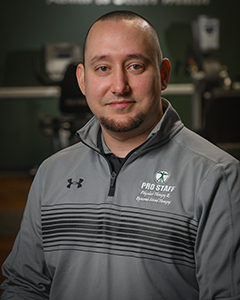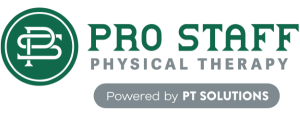Physical Therapy for TMJ Disorders
Are you struggling with jaw discomfort or mobility? It could be a result of a TMJ disorder. The temporomandibular joint (TMJ) is a small yet complex joint that connects the jawbone to the skull. This joint is unique because it allows for both hinging and sliding movements, enabling the jaw to open and close, move side-to-side, and slide forward and backward. These movements are essential for daily functions like chewing, speaking, and yawning. The TMJ is also susceptible to developing disorders, leading to discomfort and pain that can significantly affect daily life.
At Pro Staff Physical Therapy, we understand the debilitating impact of TMJ disorders. Our dedicated team offers specialized physical therapy services to relieve pain, improve function, and provide long-term solutions to manage these conditions. In this comprehensive blog, we will explore the nature of TMJ disorders and how physical therapy can be a valuable component of preventing, treating, and managing these disorders and the ongoing promotion of jaw health.
Symptoms and Causes of TMJ Disorders
TMJ disorders encompass a range of conditions affecting the joint’s functionality and comfort. Common symptoms include:
- Pain or tenderness in the jaw, especially around the joint area.
- Aching pain around and in the ear.
- Difficulty or discomfort while chewing.
- Locking of the joint makes it difficult to open or close the mouth.
- Clicking or popping sounds in the jaw when opening or closing the mouth may or may not be accompanied by pain.
The causes of TMJ disorders can vary, but they often include:
- Injury to the jaw or joint itself.
- Excessive strain on the joint due to habits like teeth grinding or clenching.
- Arthritis affecting the joint.
- Stress can lead to tightening of the facial and jaw muscles.
- Displacement or erosion of the joint’s disc.
Physical Therapy Techniques for TMJ
Physical therapy offers a range of techniques specifically tailored to address the symptoms and underlying causes of temporomandibular joint disorders. These techniques aim to alleviate pain and discomfort, restore function, and prevent recurrence. Here are some key physical therapy interventions commonly used in the treatment of TMJ disorders at Pro Staff Physical Therapy:
Manual Therapy
- Joint Mobilization: This involves gentle manipulation and movement of the TMJ to improve mobility and decrease discomfort. It helps loosen tight tissues around the joint, enhancing its range of motion.
- Soft Tissue Massage: Focused on the muscles around the jaw, neck, and head, this technique helps reduce muscle tension and relieve pain. It can be particularly beneficial for patients who experience TMJ pain due to muscle tightness or spasms.
Therapeutic Exercises
- Targeted Strengthening Exercises: These exercises are designed to strengthen the muscles around the jaw, improving their function and reducing the stress on the TMJ. Strengthened muscles can better support the joint, reducing pain and improving movement.
- Stretching and Flexibility Exercises: Stretching the muscles in the jaw, neck, and shoulders can help alleviate tightness, improve the range of motion, and decrease discomfort. These exercises can be beneficial for those with limited jaw opening.
Posture Correction
- Postural Training: Poor posture, particularly in the neck and upper back, can contribute to TMJ pain. Pro Staff physical therapists guide patients through exercises and techniques to improve their posture, which can positively affect TMJ symptoms.
- Ergonomic Adjustments: Educating patients on ergonomic principles for their daily activities, such as sitting at a computer or sleeping, can help maintain proper alignment and reduce strain on the TMJ.
Relaxation Techniques
- Stress Management: Because stress can exacerbate TMJ pain, teaching relaxation techniques such as deep breathing, meditation, or guided imagery can be beneficial.
- Biofeedback: This technique helps patients become more aware of their body’s responses to stress and teaches them how to control these responses, particularly muscle tension in and around the jaw.
The Benefits of Physical Therapy in TMJ Treatment
Pro Staff Physical Therapy offers a multifaceted approach to treating temporomandibular joint (TMJ) disorders, providing numerous benefits that extend beyond mere symptom relief:
Pain Management
- Direct Pain Relief: Physical therapy techniques are effective in directly reducing pain associated with TMJ disorders by alleviating muscle tension and joint dysfunction, two common sources of pain in TMJ conditions.
- Alternative to Medications: For many patients, physical therapy can reduce or even eliminate the need for pain medications, including over-the-counter and prescription drugs, thus avoiding potential side effects.
Improved Jaw Function
- Restoring Normal Jaw Movement: Physical therapy exercises are designed to restore the normal function of the jaw. This includes improving the range of motion, strengthening jaw muscles, correcting alignment issues, and making daily activities like chewing and speaking more comfortable.
- Reducing Joint Stiffness: Techniques like manual therapy and stretching can reduce stiffness in the TMJ, enhancing overall jaw mobility.
Long-Term Relief and Management Strategies
- Preventative Measures: Physical therapy provides patients with the knowledge and tools to manage their condition in the long term. This includes exercises to maintain jaw strength and flexibility and guidance on lifestyle changes that can prevent symptom recurrence.
- Self-Management Skills: Patients are often taught self-management techniques, such as specific exercises and relaxation methods, that they can use to manage flare-ups or prevent future problems.
- Holistic Approach: Physical therapists often take a holistic approach, addressing factors like posture, stress, and ergonomics that can impact TMJ disorders. This comprehensive approach ensures that the root causes of the symptoms are addressed, not just the symptoms themselves.
Physical therapy offers significant benefits in treating TMJ disorders by managing pain, improving jaw function, and providing patients with long-term relief and self-management strategies. This holistic approach not only addresses the immediate discomfort but also focuses on the patient’s overall well-being and quality of life.
At-Home Exercises and Tips for TMJ Management
Effective management of temporomandibular joint disorders involves a combination of professional physical therapy and at-home care. Here are a few exercises and tips that can be practiced at home to help alleviate TMJ symptoms and prevent exacerbation.
At-Home Exercises for TMJ
1. Jaw Relaxation Exercise:
- Sit or stand comfortably, relaxing your shoulders.
- Place your tongue gently on the roof of your mouth behind your upper front teeth.
- Allow your teeth to come apart while relaxing your jaw muscles.
- Hold this position for a few moments, then repeat several times.
2. Controlled Jaw Opening:
- Rest your tongue gently on the roof of your mouth.
- Slowly open your mouth as wide as possible without causing pain.
- Use your fingers to provide slight resistance to the opening.
- Hold for a moment, then slowly close your mouth.
- Repeat this exercise a few times, ensuring you move your jaw straight up and down.
3. Side-to-Side Jaw Movement:
- Place a thin object, like a tongue depressor or a pencil, between your front teeth.
- Gently move your jaw from side to side.
- Keep the movement small and controlled, ensuring no pain is felt.
- Perform this movement several times.
4. Forward Jaw Movement:
- With a thin object between your front teeth, gently move your jaw forward so that your bottom teeth are in front of your top teeth.
- Hold the position for a moment, then return to the starting position.
- Repeat several times, keeping the motion controlled and pain-free.
Tips for TMJ Management at Home
1. Apply Moist Heat or Cold Packs:
Use a warm, moist towel or a cold pack on the jaw area for pain relief. Heat can help relax muscles, while cold can reduce inflammation and pain.
Apply for 10-15 minutes, protecting the skin from direct contact with the heat or cold source.
2. Avoid Excessive Jaw Movements:
- Limit activities that require wide mouth opening, like yawning, loud singing, and chewing gum.
- Cut food into smaller pieces to minimize the need for extensive chewing.
3. Mindful Eating Habits:
- Eat soft foods that require less chewing effort.
- Avoid hard, chewy, or sticky foods that can strain the jaw.
4. Stress Management:
- Practice stress-reducing techniques such as deep breathing, meditation, or yoga, as stress can contribute to muscle tension in the jaw.
5. Maintain Good Posture:
- Pay attention to your posture, especially when working at a desk. Poor posture can contribute to TMJ discomfort.
- Consider ergonomic adjustments in your workspace.
Regularly practicing these exercises and following these tips can help manage TMJ symptoms and improve overall jaw health. It’s important to remember that these exercises should be performed gently and within a comfortable and pain-free range.
Don’t Let TMJ Pain Hold You Back
Dealing with temporomandibular joint disorders can be challenging and painful. However, through a combination of manual therapy, therapeutic exercises, posture correction, and relaxation techniques, the expert team at Pro Staff Physical Therapy is committed to relieving the immediate discomforts of TMJ disorders while focusing on long-term management and prevention strategies.
If you’re struggling with TMJ-related issues, we invite you to explore the benefits of physical therapy. Together, we can achieve lasting relief and a happier, healthier you. Find a Pro Staff Physical Therapy location near you to get started today!
Pro Staff Institute, LLC, has a network of outpatient physical rehabilitation centers in New Jersey. Pro Staff was founded in 2010 by Frank Pavlisko and Michael Maffucci. Through Frank’s 25 plus years experience in Physical Therapy and Michael’s experience in Management Services, our goal is to exceed customer expectations by providing the highest quality of service in a fun, family, friendly, and encouraging environment.
PRO STAFF LOCATIONS
OFFERING CERTIFIED
HAND THERAPY
Managing Diabetes: The Role of Physical Therapy
Managing Diabetes: The Role of Physical Therapy As of 2024, approximately 38.4 million Americans, or 11.6% of the U.S. population, have diabetes. Of these, 29.7 million cases are diagnosed, while an estimated 8.7 [...]
Staying Active and Injury-Free During Summer Activities
Staying Active and Injury-Free During Summer Activities Summer is a fantastic time to engage in outdoor sports and physical activities. Whether playing soccer, tennis, cycling, or jogging in the park, staying active is [...]
The Importance of Posture: How Proper Alignment Can Prevent Pain and Injury
The Importance of Posture: How Proper Alignment Can Prevent Pain and Injury In today's fast-paced world, where many hours are spent over desks, smartphones, and computers, posture is often neglected. Poor posture can [...]





